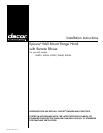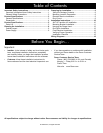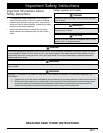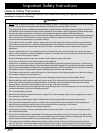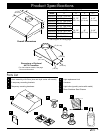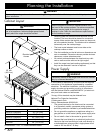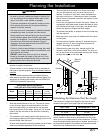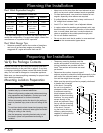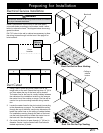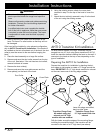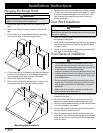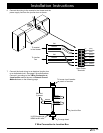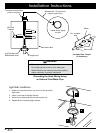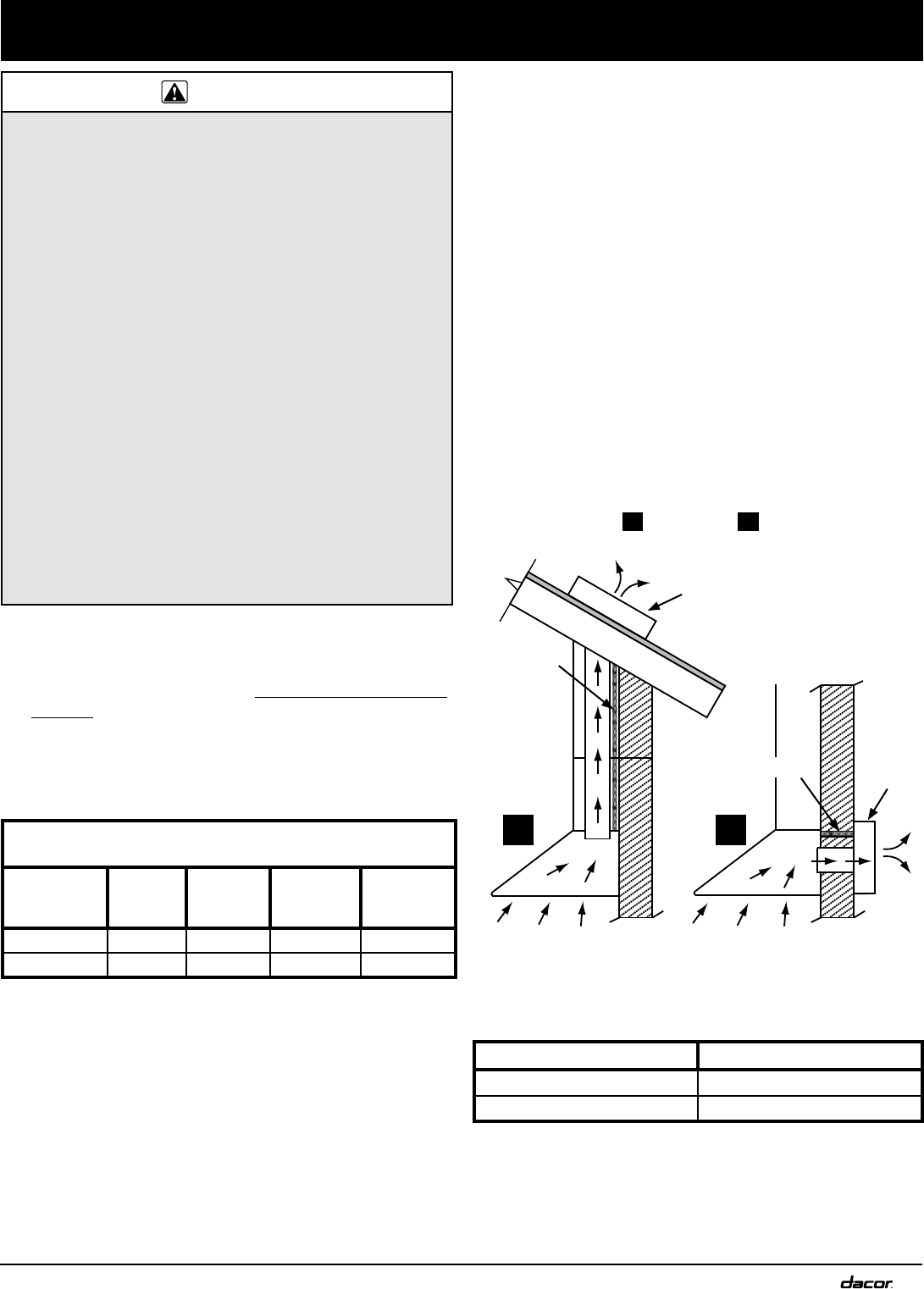
7
Planning the Installation
WARNING
To reduce the risk of fire and to properly exhaust air, •
be sure to duct air outside the house or building. Do
not vent exhaust air into spaces within walls or ceil-
ings or into attics, crawl spaces or garages.
To prevent combustion by-products, smoke or odors •
from entering the home and to improve efficiency,
tape all duct joints securely.
Use only duct work constructed of materials deemed •
acceptable by state, municipal and local codes.
Range hoods may interrupt the proper flow of smoke •
and combustion gases from furnaces, gas water
heaters and fireplaces. To avoid drawing lethal gases
into the home, follow the manufacturer’s recom-
mendation for these devices and consult NFPA and
ASHRAE recommendations.
Failure to install a remote blower or proper duct work •
may result in a back draft and/or the insufficient vent-
ing of smoke and fumes.
DO NOT• install more than one in-line or external
blower to increase the length of the duct run. Even
small differences between blower air flow rates can
greatly reduce the air draw by the hood.
The ventilation system consists of hood and a single •
remote or single in-line blower.
A Dacor remote or in-line blower must be installed for •
the hood to operate properly. Only one blower shall be
installed.
The EHR series hoods cannot be installed with any •
other blower type than the models indicated below. For
directions on installing the blower, see the REMP3/16,
ILHSF8/10 installation instructions.
APPROVED DACOR BLOWERS
FOR USE WITH EHR SERIES HOODS
Model
REMP3*
(remote)
600 CFM
ILHSF8*
(in-line)
600 CFM
REMP16*
(remote)
1000 CFM
ILHSF10*
(in-line)
1200 CFM
EHR30/36/42 X X X X
EHR48/54 X X
* At 0 inches static pressure
Wire the remote blower to turn on. The vent is turned •
on by running a piece of conduit parallel to the duct
work and connecting it to the hood on one end and
the remote blower on the other. There are 7/8” access
holes in the top and back of the hood for connecting
the conduit.
The customer must supply conduit with minimum cur-•
rent carrying capacity of 8 Amps to supply power to the
remote blower from the hood.
All duct work materials (including screws and duct tape) •
must be purchased separately by the customer.
The hood exhaust connects to an 8-inch round duct. •
You can increase the duct size over the duct run if
desired. To prevent a back draft, never decrease the
duct size over the run. If existing duct work is smaller
than 8 inches in diameter, remove it and replace it with
8-inch duct work.
Do not rely on tape alone to seal duct joints. Fasten all •
connections with sheet metal screws and tape all joints
with certified silver tape or duct tape. Use sheet metal
screws as require to support the duct weight.
To prevent back-drafts, a damper at the duct outlet may •
also be required.
Make sure duct work does not interfere with floor joists •
or wall studs.
On dual exhaust models, the two 8” exhausts may be •
merged into one 10” duct using Dacor transition kit
AHT10. See page 10 for details.
When planning new duct work, always look for the •
shortest, most direct route to the outside. The duct col-
lar can be moved to accommodate venting (and wiring)
through the top A or the back B .
Calculating the Maximum Duct Run Length
The maximum straight duct length for the hood is deter-
mined by the type of duct used. See the chart below.
DUCT SIZE MAXIMUM DUCT RUN
8” round 60 feet
10” round 50 feet
For each elbow and transition added to the duct work, a
certain number of feet must be subtracted from the maxi-
mum duct run to compensate for wind resistance. To deter-
mine the length the duct work cannot exceed, subtract all of
the equivalent lengths of the elbows and transitions listed
below from the maximum duct run above.
Conduit
Conduit
Remote
Blower
Remote
Blower
A B



